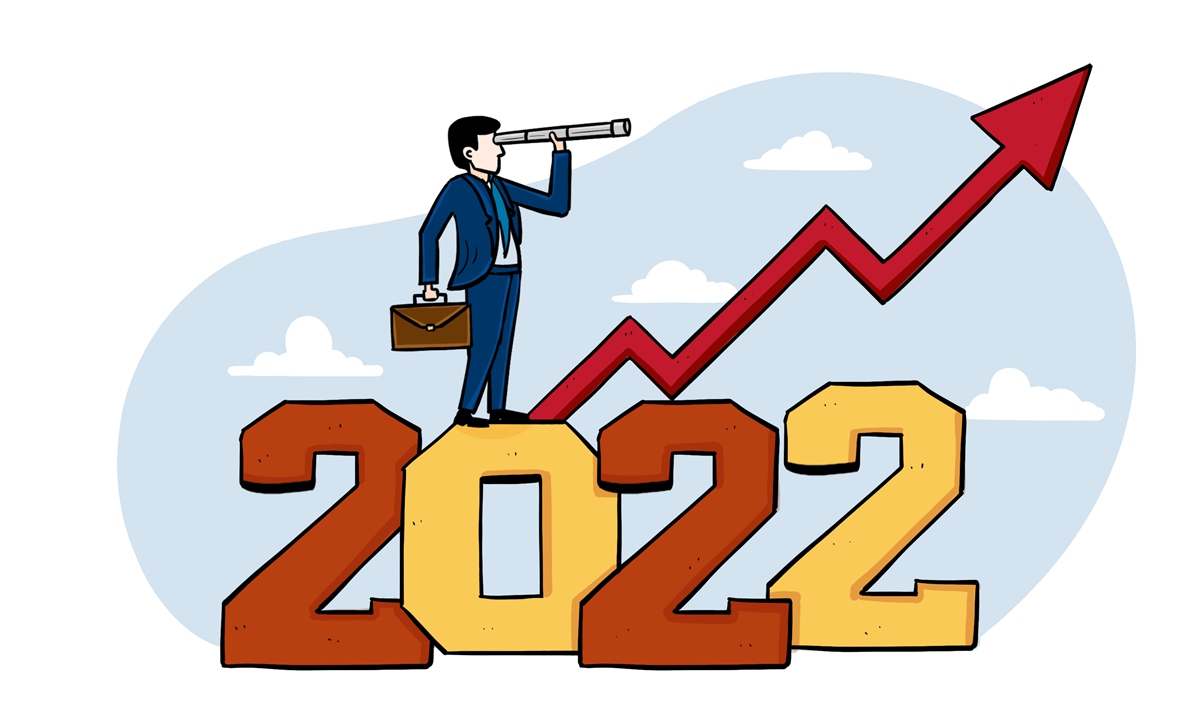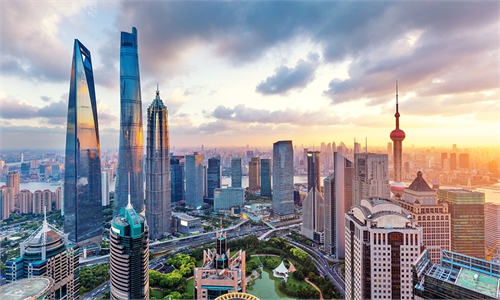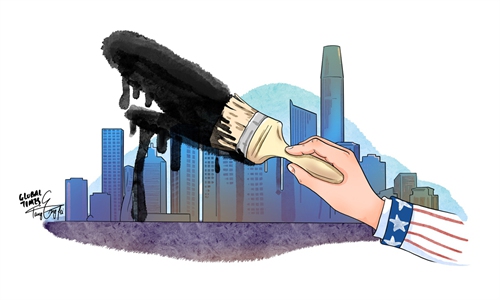COMMENTS / EXPERT ASSESSMENT
Economy to keep running in fast lane in 2022 following structural reforms

Illustration: Chen Xia/Global Times
With 2021 rapidly drawing to an end, China's policymakers are expected to convene an important economic meeting in Beijing in middle December to craft the course of accelerating structural reforms while overcoming a raft of challenges in 2022. Investors worldwide are closely watching for clues on next year's policy and reform agenda as China has become the leading engine of the global economy.
In considering the country's customary plan choreographing an annual growth rate for the coming year, Chinese policymakers are expected to set the GDP growth target at "above 5 percent" for 2022. The International Monetary Fund (IMF) has predicted China is likely to achieve 5.6 percent economic growth next year. It is necessary to strive for relatively fast 5.5-6 percent growth in order to create sufficient jobs and maintain economic and social stability.
Thanks to lower levels of inflation in the country, the People's Bank of China, the central bank, is expected to take more aggressive counter-cyclical financial tools to support Chinese enterprises to speed up technological transformation and expand production in 2022, and at the same time, stimulate the country's vast middle-class to keep shopping by browsing and clicking on numerous e-commerce platforms on their mobile phones. Expanding household consumption will always remain the decision-makers' top agenda in boosting GDP growth.
Fiscally, China's central government is estimated to maintain proactive spending on building more bridges, digging more subways, laying down more high-speed rail and rolling out more 5G basic stations throughout the country. Government expenditure on medical care, education, retirees' livelihood and welfare, and national defense capability will all be ramped up. To counter growing economic slowdown pressures, a relatively loose monetary and fiscal policy is broadly deemed indispensable. The central bank is expected to cut reserve ratio the commercial lenders are required to hold before March.
China, overcoming a series of unprecedented difficulties, recorded a 2.3 percent GDP rise in 2020 while the world's other major economies plunged 3.5 percent on average. Over the first three quarters this year, China's economy surged by 9.8 percent compared with the same period last year, according to the data from the National Bureau of Statistics. This year, China is forecast to achieve 8.2 percent growth rate with the yearly GDP estimated to reach $16.1 trillion, remaining the fastest growing economy among G20 nations.
From 2013 to 2020, China's economy expanded by an annualized 6.7 percent, compared to a global average 3.1 percent growth. This spectacular achievement of Chinese economy is attributed to the hard work and competitiveness of Chinese workers and Chinese enterprises, and, in particular, the country's ruling Communist Party of China (CPC) and the country's top leadership have displayed extraordinary economic management competency in navigating the giant economy through rough waters like the 2008-09 global financial crisis and the Covid-19 pandemic.
Nevertheless, the world's second largest economy is currently facing strong headwinds, including the new Omicron coronavirus variant, financial risks represented by Evergrande's debt woes, the potential spillover impact of the US monetary policy turnaround, and a thorny trade relationship with the Biden administration.
The Chinese economy, which staged an impressive rebound from last year's coronavirus-induced slump, lost some momentum in the third quarter this year as China grappled with slowing manufacturing, rising property market debt, intermittent Covid-19 outbreaks and historic levels of flooding in central provinces including Henan and Shanxi. A global semiconductor supply shortage also negatively impacted auto-making and other industrial sectors. The fall quarter saw the economy increase 4.9 percent from the same period last year, markedly slower than the 7.9 percent growth in the second quarter.
But the country knows how to resolve temporary challenges. Overcoming a short-term electricity supply crunch, China's factories are booming again, and the official manufacturing purchasing managers' index rose to 50.1 in November, the first uptick after six months of decline. And, whether it be the Delta or Omicron variants, China knows how to bring new flare-ups under firm control and keep factories, offices, restaurants, pubs and cinemas open for operation and business, by strictly endorsing its "Zero Covid" policy and never lessening preventive measures
In addition to domestic consumption and infrastructure investment, China's exports have been hectic since early this year - becoming another strong pillar for GDP growth. For months, the Western media and economists have made the same prediction that the fast growth of China's exports cannot last. The facts have proved them wrong. The country's export machine has kept booming through December.
In 2022, structural economic reform measures are likely to deepen. First, digital transformation of Chinese industries and multiple tertiary service lines will accelerate, as more resources will be invested on ultrafast internet connections, big data, industrial and service robotics, artificial intelligence innovations and applications.
Second, China has made marked gains in new energy innovation and utilization as well as popularization of electric vehicles, these efforts will only ratchet up in the coming years. Solar panel farms and wind turbines are expanding throughout the country. This year, EV sales are expected to hit 2.7 million and in 2022 the sales will likely reach 3.5 million, making China the undisputed global leader in low-carbon development.
Also, urbanization - another great engine of growth for China -- will carry on, as more rural workers move to dwell in the cities. The central government is expected to come up with more measures to address income inequality by regulating internet platforms to ensure fair and proportional income and welfare for tens of millions blue collar workers such as the courier delivery personnel. Home building is likely to regain impetus in 2022, after China has focused on reducing property developers' debt problems and fending off real estate bubbles in 2021.
The author is an editor with the Global Times. bizopinion@globaltimes.com.cn



